Face-Off: Oddworld New 'n' Tasty
The Unity engine-powered remake compared on PS3, PS4, Xbox One and PC.
Not so much a remaster, but more of a full-on remake, Oddworld: New 'n' Tasty is a completely new take on the fondly remembered PS1 puzzle-based platformer, Abe's Oddysee. Built up from scratch with brand new artwork and a modern 3D graphics engine, developer Just Add Water faithfully replicates the gameplay of the original release, while adding new features to better utilise the more modern hardware. Scrolling environments add new twists to old puzzles, while the use of 3D visuals allows for sweeping camera angles and additional details that further flesh out the world over what was possible on the first-gen PlayStation hardware.
The game was originally released last year on PS4 to much acclaim, earning the Eurogamer Recommended seal of approval, but Just Add Water hasn't stood still since then. New 'n' Tasty followed on PC and Mac, with the Xbox One release hitting at the end of March, while PlayStation 3 sneaked out last month. The key to the game's platform proliferation is the utilisation of the highly regarded Unity engine - and this is the first title that we're aware of that gives us the opportunity to see how the tech stacks up across console and computer. For the record, Just Add Water tells us that the game uses a customised version of Unity 4.3, incorporating a few enhancements from the 4.5 and 4.6 iterations of the tech. It's not the most recent iteration of the engine, but it does allow for the utilisation of deferred rendering, massively increasing the amount of light sources available in any given scene.
As promised, native 1080p is deployed across both PS4 and Xbox One, with anti-aliasing provided by a customised variant of FXAA, working well in smoothing off the presentation without too many side effects. The lack of complex sub-pixel imagery ensures that shimmering and jaggies are kept under control, while the light texture blurring properties of FXAA are actually fairly well suited to the style of the game, favouring softer imagery in the style of pre-rendered CG.
PC-side, anti-aliasing options are limited to a single slider that adjusts the strength of a post-process AA solution that looks like a tweaked version of the FXAA algorithm used on console. With the slider set to maximum, edge-related coverage is a touch more refined than PS4 and Xbox One when scrutinising images at a pixel level, but there's little tangible difference in practice, with all three versions sporting largely equivalent image quality.
Alternative comparisons:
While the use of the older version of engine rules out Unity 5 rendering features such as global illumination and physically-correct shading, the use of deferred rendering in Oddworld New 'n' Tasty allows the developers to liberally cast multiple light sources on-screen to infuse environments with plenty of atmosphere and depth. Rich ambient lighting is joined by multiple direct lights from billboards, weapons fire, and flashing alarms, creating vivid and memorable locations that help the Oddworld universe spring to life in ways not possible on the original release.
The new '2.5D' set-up in New 'n' Tasty better fleshes out the environments, showcasing layers of scenery with elements such as conveyor belts and walkways that reach across various planes. Meanwhile, animation and physics are given a boost via Unity's MechAnim solution, which sees Abe and his pursuers move and react much more realistically than the original game.
On a technical level we see the PS4 and Xbox One versions of Oddworld featuring the same standard of graphical quality as the PC game running at maximum settings, with lighting and effects work appearing interchangeable between platforms. Dynamic light sources lead to differences in how locations are illuminated across all formats at any given moment, but the way in which lighting and shadows are displayed on-screen is otherwise identical.
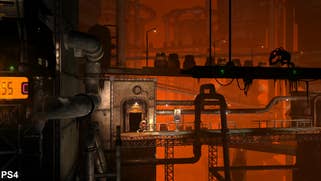


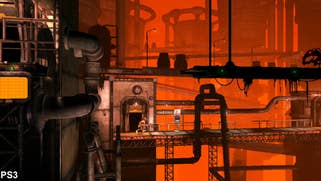

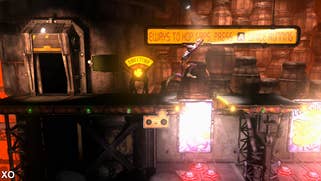





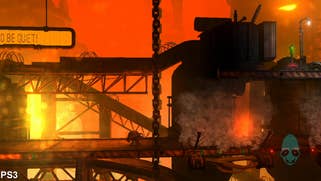



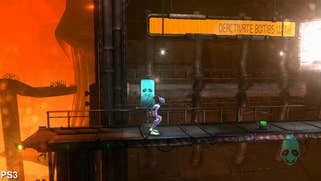




Oddworld New 'n' Tasty's latest release - on PlayStation 3 - allows us to get a lock on how the Unity engine and the game assets scale down onto less capable platforms. While the core art style and feel of the game are very similar to the current-gen console versions, there are clearly some graphical downgrades in play in order to get the experience running on older hardware that has far less memory and processing power available. 1080p is out of the question, with Just Add Water naturally dropping down to the last-gen standard 720p, with a less comprehensive form of post-process anti-aliasing in effect. Coverage is particularly spotty, and often it appears as though the game is running without any form of edge smoothing - jaggies are visible in motion while stair-step patterns are seen on long edges.
In other areas, geometry complexity is pared back across environmental objects, while texture detail and resolution also takes a hit. In particular, many normal mapped surfaces on the current-gen versions of the game feature flat textures on PS3 up against a distinctly bumpier representation on the more capable platforms. The lighting model is also simplified and a few shader effects used on metallic surfaces see cut-backs and omissions.
As a result of these changes, environments lack the same level of refinement, with some scenes featuring a hit to depth and a slightly less atmospheric feel. That said, the core look of the game remains closely matched from an artistic standpoint. On a conceptual level, all the key decisions taken in modernising the original game remain fully in effect on PlayStation 3.
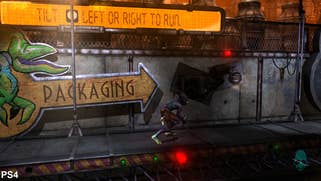

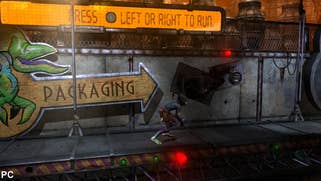

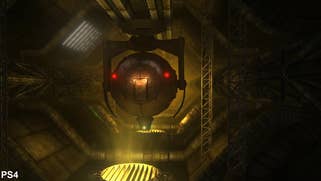

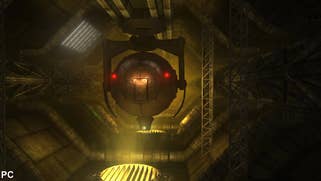





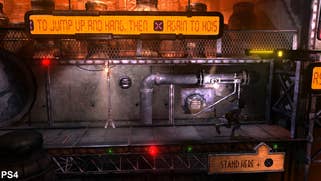





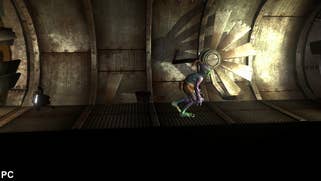
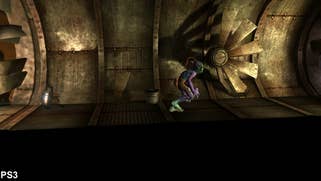
Moving onto performance, while the developers target 60fps for gameplay, cut-scenes are capped at 30fps across all consoles and mostly operate solidly at that frame-rate, with only a few inconsequential dropped frames occasionally creeping in. Surprisingly, these sequences are also limited to 30fps on PC, but strangely they don't run quite as smoothly as they do on PS4 and Xbox One. Frame delivery is less even resulting in some stutter during sweeping camera pans in some locations.
Moving onto the core gameplay experience, our test system - featuring a Core i5 3570 and GTX 780 - gives us a solid 60fps experience free from any unwanted frame-rate drops or stutter, effectively recreating the feel of the classic 2D platformers on older systems. Installing the game onto our budget gaming PC, featuring a Core i3 4130 and a GTX 750 Ti, again we find that the game runs very smoothly at 1080p with max settings - and that's a clear cut above both current-gen consoles. Unfortunately, the PS4 and Xbox One versions of the game don't fare quite as well, regularly suffering from judder and unwanted fluctuations in fluidity.
Just Add Water targets 60fps on consoles, but both machines fall short with frame-rates tending to settle in the 40-50fps range - a No Man's Land where judder is impossible to avoid during camera pans and lengthy scrolling sequences. Sprinting across locations in New 'n' Tasty isn't particularly smooth as a result, and the stutter is noticeable - more so on Xbox One which is often between 5-15fps behind the PS4 game. At its lowest point, Microsoft's console hands in 35fps metrics, compared with around 40fps on the PS4.
The good news is that these interruptions in smoothness are less of an issue in slower-paced moments - judder is more noticeable generally in faster-paced scenes. Bearing in mind that New 'n' Tasy is all about stealth and puzzle solving, gameplay remains relatively unaffected for extended periods of time when you aren't running at full pelt around the environments, though the situation is not entirely ideal.
Our understanding is that the Unity tech utilised in New 'n' Tasty isn't especially optimised for multi-core systems, and that is reflected in the variance in performance seen on PS4 and Xbox One. The fact that PS4's more powerful GPU hardware isn't giving us an entirely consistent boost to performance over Xbox One suggests that we're not always limited by the graphics hardware, with the CPU often presenting itself as more of a bottleneck. This is no problem for PC of course, where Intel's immense single-thread performance gets us to our target of a locked 60fps with seeming ease - even with a Core i3 processor. Given the choice, we would like to see the option of a 30fps lock included should the game receive a patch.
A hard 30fps limit is actually a feature of the PlayStation 3 version of New 'n' Tasty, which in many cases produces a more consistent delivery of frames than the Xbox One and PS4 versions. Frame-rates are stable in large portions of the game too - though areas with multiple light sources and alpha effects cause performance to drop down between 20-30fps for extended periods, creating more obvious and noticeable stutter.
Oddworld: New 'n' Tasty - the Digital Foundry verdict
Oddworld: New 'n' Tasty is a successful remake of the classic game, merging familiar gameplay mechanics with a complete visual overhaul that is both modern and attractive, while retaining the humour and spirit of the original game. It's a Eurogamer Recommended title on PS4 and from a gameplay perspective, it's just as compelling on PS3, Xbox One and PC too. On a technical level, the same core level of graphical quality is present across the PS4, Xbox One and PC, but the inability to hold 60fps jars on console - especially on the Microsoft platform.
We were fascinated to see how the Unity engine would cope running across such a large array of hardware and the results are intriguing: aside from its occasional dips beneath 30fps, the veteran PlayStation 3 hands in an excellent experience, the frame-rate cap working well in delivering a consistent, playable game (and the developer's decision to make this a CrossBuy title is a real crowd pleaser - even owners of the 'free' PlayStation Plus PS4 game get the PS3 version too).
Meanwhile, PlayStation 4 pulls ahead of Xbox One simply by virtue of its higher frame-rate, though the consistency of the advantage is uneven, owing to the multi-core CPU limitations that are a part of the Unity 4.x set-up used here. Hopefully this issue will be resolved in more recent versions of the Unity tech.
All of which means that - perhaps unsurprisingly, bearing in mind Unity's roots - it's the PC version of Oddworld New 'n' Tasty that is our preferred release. Achieving a rock-solid 60fps isn't going to be too taxing, and the raw single-thread power needed to get the title running at its best suits the hardware set-up of mainstream enthusiast gaming PCs, with enough headroom left over GPU-wise for more powerful hardware to break free of 1080p resolution.











